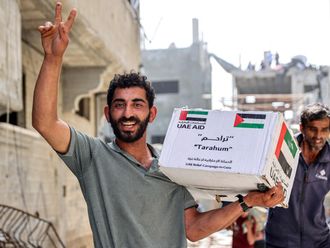
Beirut: In season one, which dragged from mid-2015 to early-2016, the Lebanese were exposed to an 8-month-long garbage crisis that transformed itself into a major scandal, even if most of Lebanon became an open landfill.
When the agreement to presumably resolve this unbecoming catastrophe was finally reached in late January 2016, public tenders were issued to enlarge two existing landfills near the capital, one in the northern suburb of Burj Hammud and another in the southern suburb of Choueifat. The genius of the deal, which entered into vigour in late March 2016, was to further burden the treasury with added costs that, by universal acknowledgement, lined many pockets.
In season two, which started in early August, highlighted the Burj Hammud landfill where an unprecedented dispute surfaced.
For the past several months, the capital’s municipality simply stored trash inside parking lots adjacent to the proposed site where, presumably, a treatment facility and/or incinerators would eventually be established — though nothing was initiated.
A few weeks ago, Phalange Party students forced the suspension of storage work at the Burj Hammud site, as they demanded a halt to what they called “the project of landfilling the sea with garbage on Metn’s coast”. They blocked access to trucks entering the facility, which meant that Sukleen, the company that was rehired by the same political class that objected to its high-rates and, of course, at even more elevated fees, left most of the garbage uncollected.
On Monday, the Phalange Party issued its strongest criticism yet against the establishment, declaring that the crisis “exposes anew the corruption mafia that is controlling the country”.
It called for the creation of waste sorting and treatment plants as envisaged by the presumed March 12, 2016, accord, and to bring to an end the temporary storage of the accumulating garbage in non-residential areas.
“In light of the outcome of the Finance Parliamentary Committee meeting, in which the conferees confirmed that only less than 10 per cent of waste is being sorted and around 90 per cent is being landfilled, the Phalange has invited the relevant municipalities and municipal unions to a meeting that will be held on Wednesday to explore their viewpoints and proposed solutions,” it added.
Many Lebanese prefer authorities to hire companies that would set-up waste sorting and management plants in every district, as part of its decentralisation plans, although Akram Chehayeb, the Minister of Agriculture, entrusted with this file claimed that Lebanese municipalities had the right to manage their own waste as long as they adhered to the conditions of his waste management initiative.
Cheyaheb’s landfill options in Burj Hammud and Choueifat are supposed to be temporary solutions and last a total of four years, ostensibly to allow the government the means to develop a long-term and presumably a permanent solution.
The season two garbage show shenanigans promise more of the same as streets, forests and riverbanks will, once again, overflow with waste and the air will, once again, be filled with the smell of rotting and burning garbage.
It was unclear whether the 2015 public outcry would be repeated against the entire political class, which led some Lebanese to activate civil society movements like “You Stink” and “We Want Accountability”, even if wily elites quickly absconded those modest efforts that withered at the proverbial vine.
Chehayeb is now calling on all sides to “cooperate on the implementation” of the trash plan, and while he recognises that this transitional plan is not an ideal solution, he nevertheless insists that it is “the only one that is able to take [Lebanon] to a permanent plan”.











